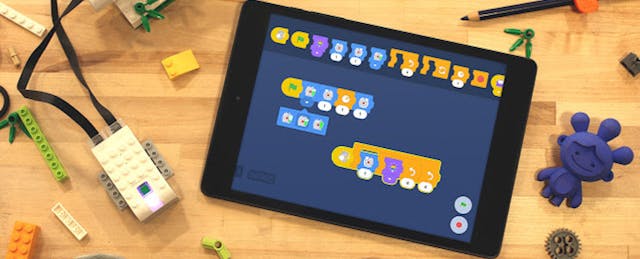Will Google Apps for Education be Gen Y’s Bill Nye the Science Guy?
As part of its Making & Science Initiative, Google Apps for Education (GAFE) has released Science Journal, a free app that uses the sensors in Android phones or Arduino microcontrollers to record simple scientific observations—speed, acceleration, ambient light, decibel levels—and visualize them. It’s a lab notebook for smartphones.
GAFE aims to engage more students with science by broadening how they think of it. In a blog post, the education arm of the search giant wrote, “[Science is] not just memorizing facts, wearing a lab coat or listening to a lecture. It’s observing the world around us to figure out how it works and how we can make things better through experimentation and discovery.”
The company has partnered with San Francisco’s Exploratorium on the project, and the interactive museum is helping GAFE create kits with inexpensive sensors, craft supplies and microcontrollers. The company provides a list of supplies for makers to assemble them at home and likewise plans to open the source code for the Science Journal app and has released the microcontroller firmware on Github. The goal behind making all the materials free and easily modifiable, GAFE said in its blog post, is to “work with hardware vendors, science educators and the open source community to continue improving Science Journal.”
In conjunction with the Imagination Foundation, the company has published a series of videos titled “Science at Play.” The first in the group, “Are you a scientist?” is below.
More science, this time with forests
GAFE has also released Global Forest Change Explorer, an online tool that allows users to visualize deforestation from 2001 to the present in different countries. As with Science Journal, the company aims to empassion students about science. Unlike Science Journal, Forest Change Explorer does not allow users to input their own data, presumably because measuring forest loss is more complicated than acceleration. Much of the data comes from University of Maryland researchers who used Google Earth Engine to map forest loss the world over. They published their findings in Science and for free online, and now GAFE is using their data. It was a feedback loop of Google data and visualization.
Why this particular tool? “For the sake of our future,” GAFE writes, “It is critical that all people, including the next generation, understand our global forests in order to manage them sustainably.”
Brief updates
ONE MILLION EXPLORERS: GAFE announced at Google I/O that more than one million students from 11 countries have participated in an Expedition, the company’s virtual reality field trip program. GAFE offers the program to schools and learning centers through its Pioneer Program
SCRATCH 2.0: In a move to expand coding resources for young students, GAFE and Scratch released a beta version of Scratch Blocks, a new block-based programming language for kids, on Google’s developer blog. The open source tool is meant to jumpstart “the development of a new generation of graphical programming blocks.”
We covered I/O’s biggest announcement in more depth here.


